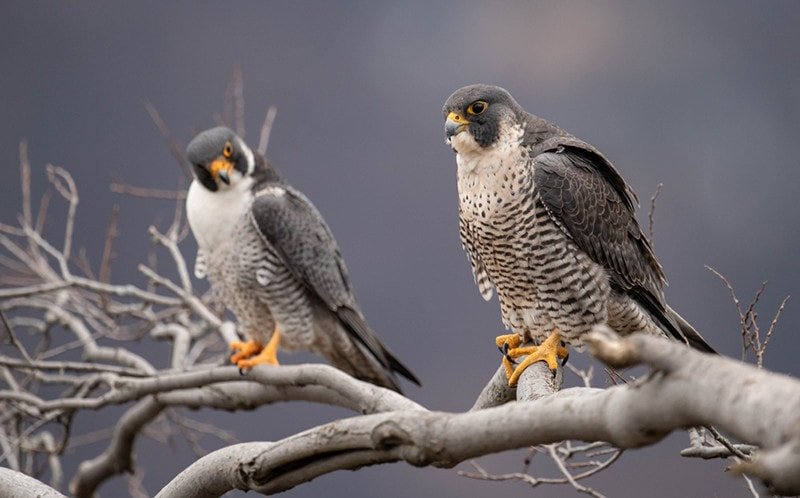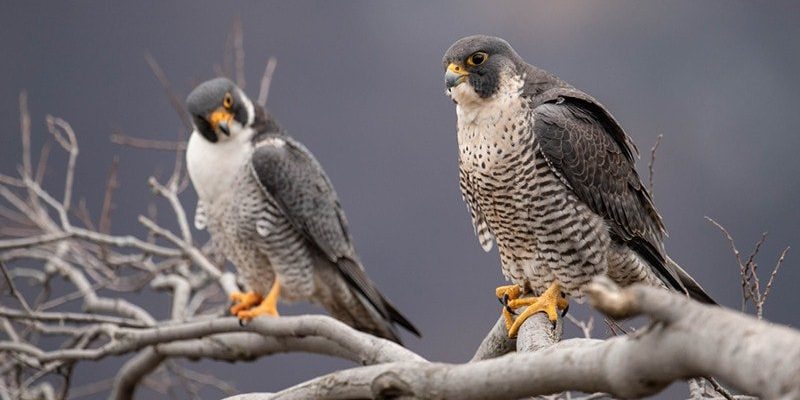
Let’s dig into the intriguing world of the peregrine falcon, separating fact from fiction. Whether you’re a birdwatching enthusiast or just curious about nature, understanding these myths can enhance your appreciation for this extraordinary creature. So, grab a cup of coffee, and let’s chat about the common misconceptions that make their way into everyday conversations about falcons.
Myth 1: The Peregrine Falcon is the Fastest Bird in the World
You might have heard that the peregrine falcon is the fastest bird, and while that’s not entirely incorrect, let’s clarify what that means. The peregrine falcon is indeed the fastest bird, but only when it’s diving. In a stoop, which is the term for its hunting dive, it can reach speeds of over 240 mph. That’s mind-blowing, right? It’s like comparing a sports car to a bicycle—one zooms while the other is great for cruising.
However, if you think about it in terms of level flight, other birds, like the common swift, can fly faster. So, while the peregrine holds the crown for speed when diving, it doesn’t necessarily mean it’s the fastest bird in all scenarios. It’s essential to see the full picture to appreciate these incredible birds.
Myth 2: All Peregrine Falcons are the Same
Another common misconception is that all peregrine falcons look alike. If you’ve ever seen one in the wild, you know that these birds can vary quite a bit. There are several subspecies of peregrine falcons, and they can differ in size, color, and habitat.
For example, the Tundra Peregrine Falcon is smaller and lighter than its cousin, the Prairie Peregrine, which is larger and darker. These variations help them adapt to different environments, just like humans who thrive in various climates. So, next time you spot a peregrine falcon, take a moment to appreciate its uniqueness.
Myth 3: Peregrine Falcons Only Live in Remote Areas
You might picture peregrine falcons soaring over vast wilderness areas, but here’s the thing: these birds are incredibly adaptable. While they do thrive in remote regions, they can also be found in urban environments. In fact, some major cities have become hotspots for peregrine falcons.
Take New York City, for instance. The tall skyscrapers mimic the cliffs and high ledges these birds prefer for nesting. You can find them resting on windowsills or nesting on skyscrapers, showcasing their ability to thrive in the hustle and bustle of city life. This adaptability shows just how resilient peregrine falcons can be.
Myth 4: Peregrine Falcons Only Eat Other Birds
When you think about a predator like the peregrine falcon, it’s easy to picture it swooping down on unsuspecting birds. While that’s a big part of their diet, it’s not the whole story. Peregrines are opportunistic feeders, meaning they’ll eat whatever is available.
In addition to birds, these falcons can also consume small mammals, such as rodents. It’s like going to a buffet—if one dish isn’t appealing, they’ll try something else. This flexibility allows them to survive in various habitats, making them even more fascinating.
Myth 5: Peregrine Falcons Have No Natural Enemies
It’s easy to assume that such a powerful bird has no natural predators, but that’s not entirely accurate. While adult peregrine falcons are often at the top of the food chain, they still face threats. For instance, eagles and large hawks may occasionally prey on younger or weaker peregrines, especially during nesting season when chicks are vulnerable.
Additionally, human activities, such as habitat destruction and pesticide use, pose significant threats to their populations. This myth reminds us that no species is entirely without challenges; they all play a role in the delicate balance of nature.
Myth 6: Peregrine Falcons Don’t Mate for Life
Many people believe that peregrine falcons are not monogamous, but in reality, these birds often form strong pair bonds. They typically mate for life and return to the same nesting site year after year.
Think of them as the loyal friends who always have each other’s backs. This bond is essential for raising their young, as both parents share the responsibility of feeding and protecting their chicks. It’s heartwarming to see such commitment in the animal kingdom, reminding us that relationships matter, even among birds!
Understanding the truths about the peregrine falcon not only enhances your knowledge but also deepens your appreciation for these remarkable birds. By dispelling the myths surrounding them, we can better protect and conserve their habitats, ensuring future generations can enjoy the sight of these incredible creatures.
So, next time you hear someone share a myth about the peregrine falcon, you can share your newfound knowledge. Whether it’s about their speed, adaptability, or mating habits, you’ll be able to spread awareness and appreciation for these amazing avian athletes. Remember, every bird has its story, and understanding them helps us connect with the natural world around us.

